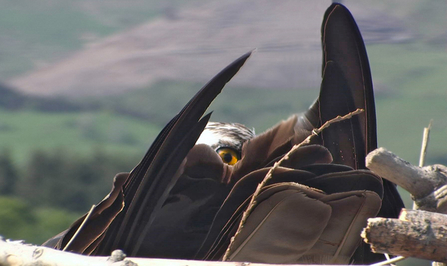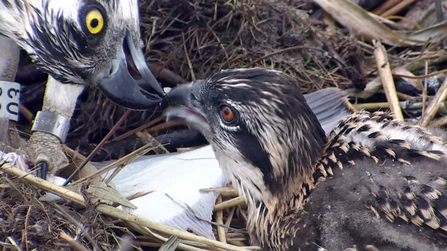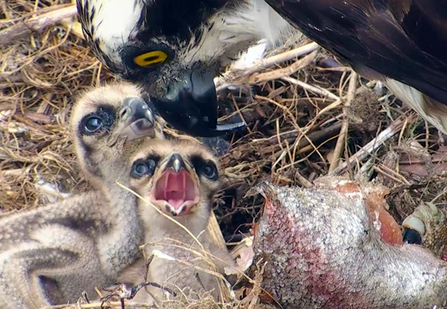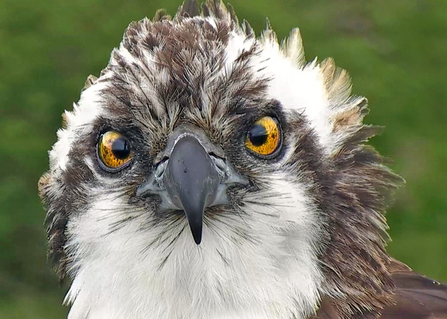Over 47,000 people visited the Dyfi Osprey Project in 2011. If all of those people asked just two questions, that’s almost 100,000 enquiries. Of all those thousands of questions we answer every year, one question probably crops up more than any other – how can you tell the difference between Nora and Monty?
Thankfully, there’s an extremely easy way to tell them apart - eye colour.
This osprey is incubating three eggs, but is it Monty or Nora?




